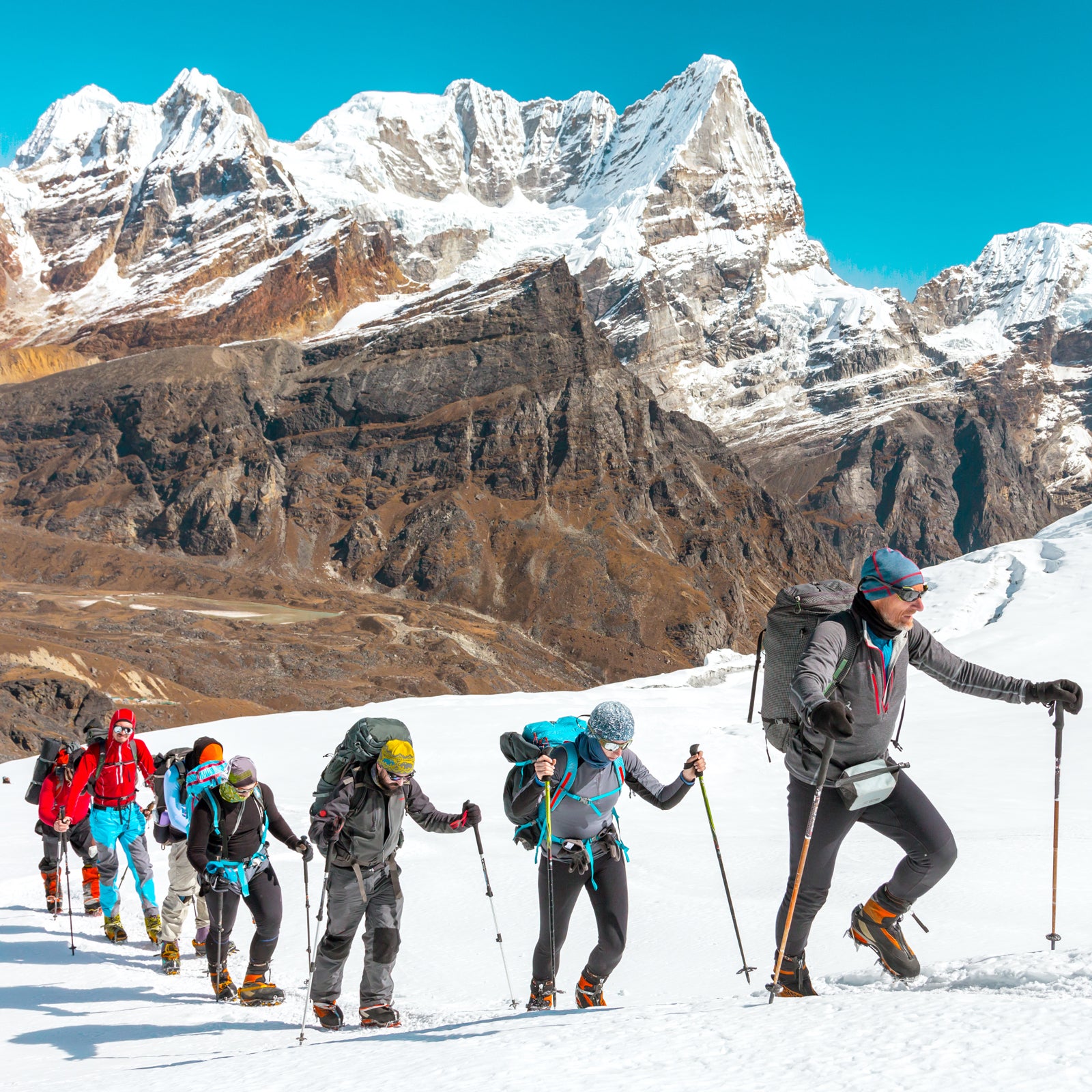When it comes to your time and money, signing up for an in-depth skills course shouldnÔÇÖt preclude going on a dream trip. By traveling to one of the countries below, you can get world-class certification in anything from scuba diving to mountaineering, often for less╠řthan you would pay in the United States. Plus, these classes offer the opportunity to connect with a destination on a much deeper level by interacting with local guides and participants╠řand to see parts of an area╠řyou may not╠řhave otherwise.╠řIf youÔÇÖre taking this time to reassess your career path or set some new outdoor╠řgoals, here are four affordable course options╠řto consider for your next work-play adventure.╠ř
Scuba Diving in Honduras
Having time at home is actually a great opportunity to begin working toward╠řyour introductory open-water diver certification. Both the (PADI) and (SSI)╠řoffer eight-to-15-hour online classes starting from $150, which knock days and dollars off your on-the-ground training.╠ř
Once the textbook learning is out of the way, itÔÇÖs just a matter of finding the best place to get in the water once itÔÇÖs safe to travel. SSI and PADI have thousands of dive centers around the world. PADI even sells its own to popular locations, such as the╠řIndonesian island of Gili Trawangan or the Red Sea town of Dahab╠řin Egypt, for less than $1,000 a week╠řbefore plane fare.
While Koh Tao, Thailand, is known as the budget dive factory of the world, it may not guarantee the best value for money. The╠řsmall╠řisland houses about 70 dive schools, most offering one-╠řor two-day courses (from $350) in the shallow, crystalline waters.╠řDespite its range of outfitters, the sheer number of newbies the╠řarea╠řattracts means you may not╠řget the personalized instruction you need at an affordable price.
For high-quality and affordable instruction, we recommend╠řCentral America. The Honduran islands of Utila and Roatan are inexpensive and╠řshort flights╠řfrom the United States╠ř(from $350 round-trip from major U.S. cities) and boast some of the healthiest coral in the Caribbean. Expect to pay around $300 for your open-water certification at╠řany of the local dive shops.╠ř
, a PADI five-star dive center in RoatanÔÇÖs southwestern tip, maintains a small student-to-instructor ratio and charges only $230 for those looking to complete the open-water portion of their certification, compared to $350 for the whole course. And just because youÔÇÖre learning doesnÔÇÖt mean you canÔÇÖt have a bucket-list experience: the center is located near some of the islandÔÇÖs famous wall dives, which, in addition to an abundance of coral, offer the chance to see manta rays and hammerhead sharks.╠ř
Mountaineering in South╠řAsia
Typically over a minimum of five to seven days, a good mountaineering course will cover rope work, scrambling, orienteering, crevasse rescues, route and risk assessment, snow and glacier traverses, and group communication. In the United States, you can expect to pay between $1,500 and $3,000 to complete the certification with a reputable outfitter.╠ř
However,╠řbudget-minded peakbaggers can learn the basics among some of the tallest mountains in the world. Our pick: the Himalayas in northern India. Permit fees╠řare low or nonexistent, and the area offers plenty of accessible peaks.
Check out the highly reputable Uttarkashi-based╠ř (NIM).╠řIts Basic Mountaineering Course costs $800 for 28 days of instruction, which includes food, accommodation, and equipment. The last is importantÔÇöif youÔÇÖre a beginner, youÔÇÖll likely want to avoid the up-front investment of buying your own gear so you can use the training as a chance to learn what works for you. The course begins with training on equipment and╠řtechniques at about 4,200 feet╠řand ends with a two-week trip to between╠ř14,000 to 16,000 feet into the Himalayas for hands-on experience with techniques like self-arresting, belaying, and using ice axes and crampons. The school also offers special women-only courses. While class sizes are bigger than many similar courses in the United StatesÔÇöbetween six and╠řeight people versus fourÔÇöthe quality of instruction is solid: NIM is funded by and trains the Indian military, which is known for its mountaineering prowess.╠ř
Yoga Teaching Training in India
Most immersive yoga teacher training courses (or YTTC) include lodging╠řand food, which makes countries with a low cost of living more affordable places to╠řstudy. While there are a number of affordable locales that specialize in YTTC, from Thailand and Indonesia to Costa Rica, the most coveted classes tend to╠řbe more expensive because╠řthey often fly in instructors from abroad. So why not go straight to yogaÔÇÖs╠řbirthplace in India, where a saturated market has resulted in competitive pricing? ItÔÇÖs easy to find a 200-hour YTTC for $1,000 or less. Compare that to Bali, where the same course╠řcan cost upwards of $5,000, or the United States, where monthlong programs start at around $2,500.╠ř
If you want to study in the actual birthplace of the practice, head to the northern city of Rishikesh, the yoga capital of the world. Situated in the Himalayan foothills along the Ganges River, the town is home to the top-rated ($1,000 for 29 days), which includes lessons in vinyasa, ashtanga, hatha, and meditation. Or try╠ř, which╠řhas brand-new student dorms ($1,059 for 26 days).╠řBoth programs lead to a Yoga Alliance Certification, an internationally recognized ticket to teach.
Canyoning in France
Even if you have no aspirations of guiding, thereÔÇÖs a strong argument to be made for taking a comprehensive canyoning╠řskills course. (See╠řthe film 127 Hours, starring James Franco as Aron Ralston, who is forced to cut off his own arm after becoming trapped in a canyon.)╠ř
ÔÇťCanyoning is not like rock climbing, where you can buy a harness and a chalk bag and go to a gym and start,ÔÇŁ says Andrew Humphreys, an international canyoning instructor and owner of . A highly technical sport, canyoning requires a variety of baseline skills and gear just to get started.╠ř
The first thing to note is the difference between canyoning and canyoneering: the former involves water, such as╠řrappelling╠řthrough waterfalls, while the latter generally refers to dry canyons.╠řCheck the of the╠řskills you need to acquire to be a proficient canyoneer, including basic knots and setting up rope anchors, as well as╠řa list of╠řcertified instructors around the world. Programs in the United States╠řrange from $130 to $220 per day╠řbut often donÔÇÖt cover water skills.╠ř
For an affordable course abroad,╠řHumphreys recommends France. At , an center in the commune of╠řNiaux in the south of France, about 500 miles from Paris, youÔÇÖll join the ranks of more than 100 independent canyoneers╠řand 35,000 beginners who have learned under the tutelage of expert Rod Strum. Its eight-day Autonomous Canyoneer╠řtraining is priced at $950 (less than $120 per day)╠řand includes all the basics recommended by the American Canyoneering Association, plus additional╠řtechniques like rappelling through waterfalls.
Prepare for your trip with an online training program from . Developed by Humphreys and other instructors, it offers free modules to teach the basics of canyoning through instructional videos and interactive video coaching.


